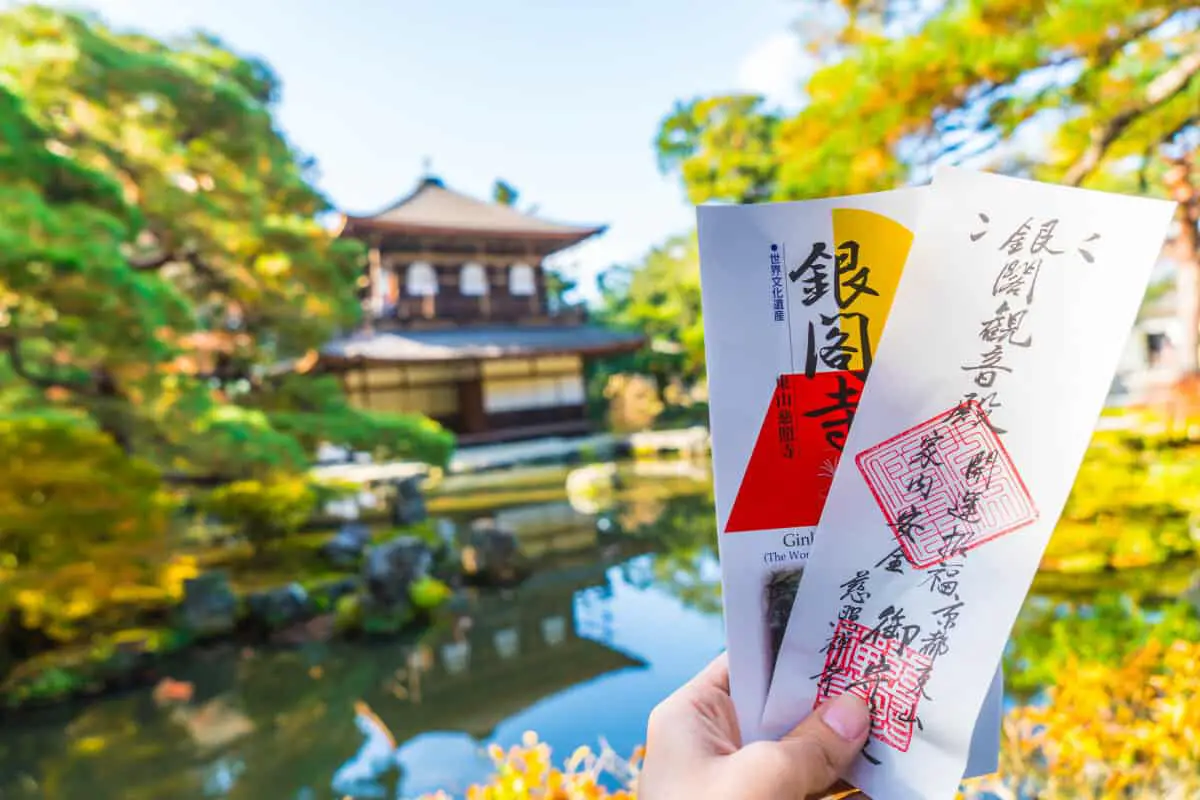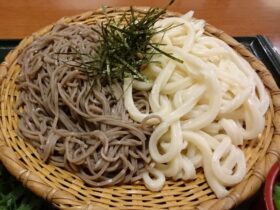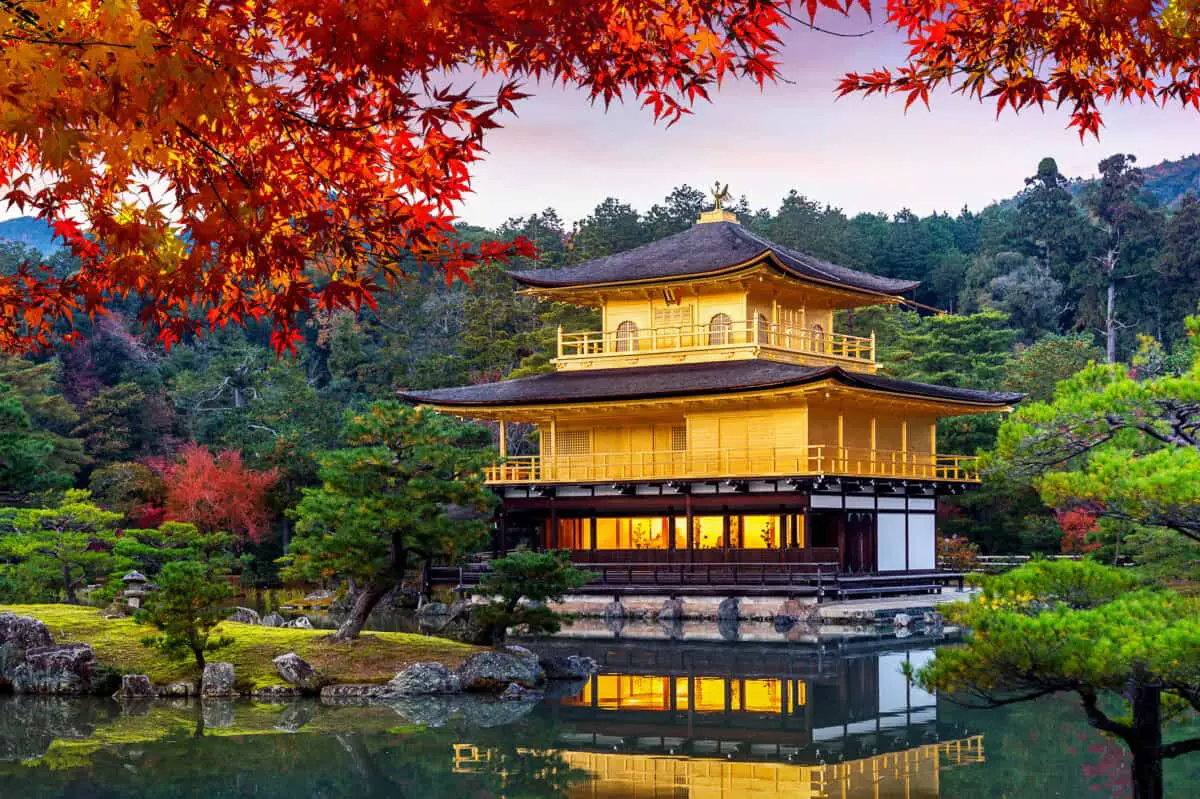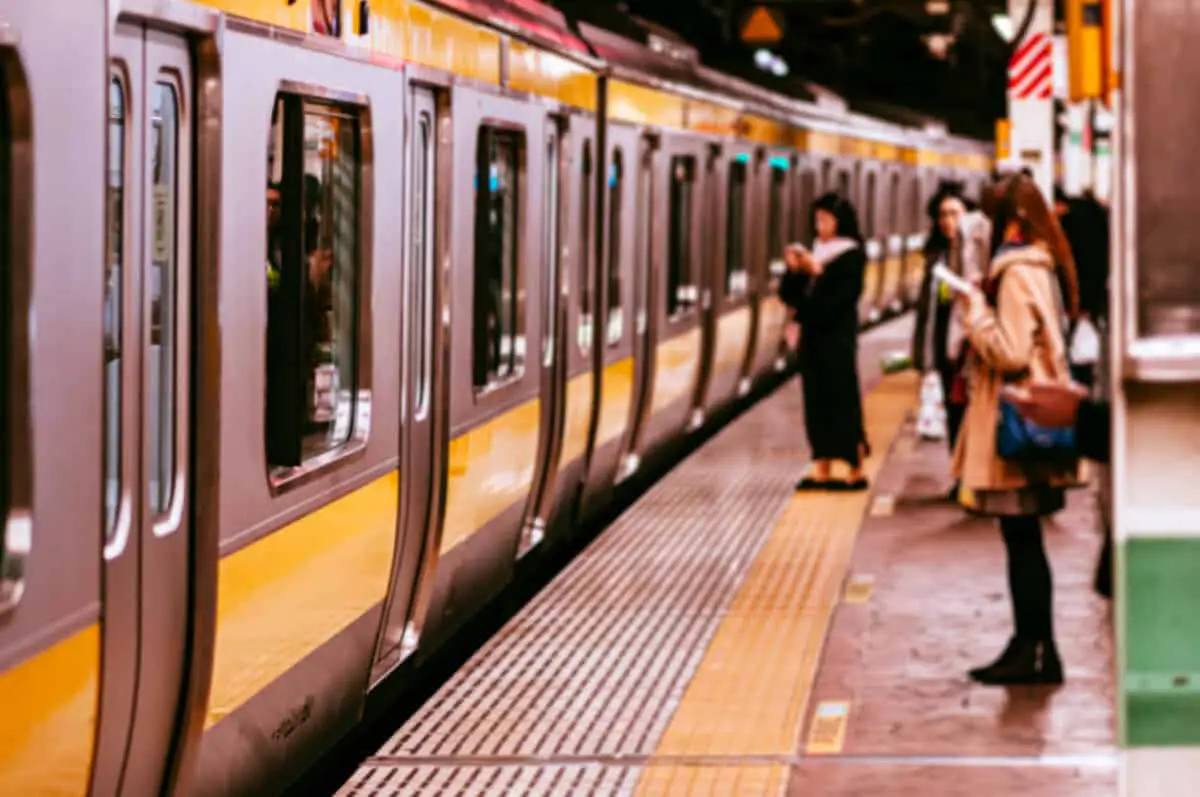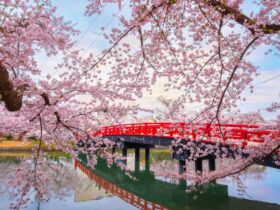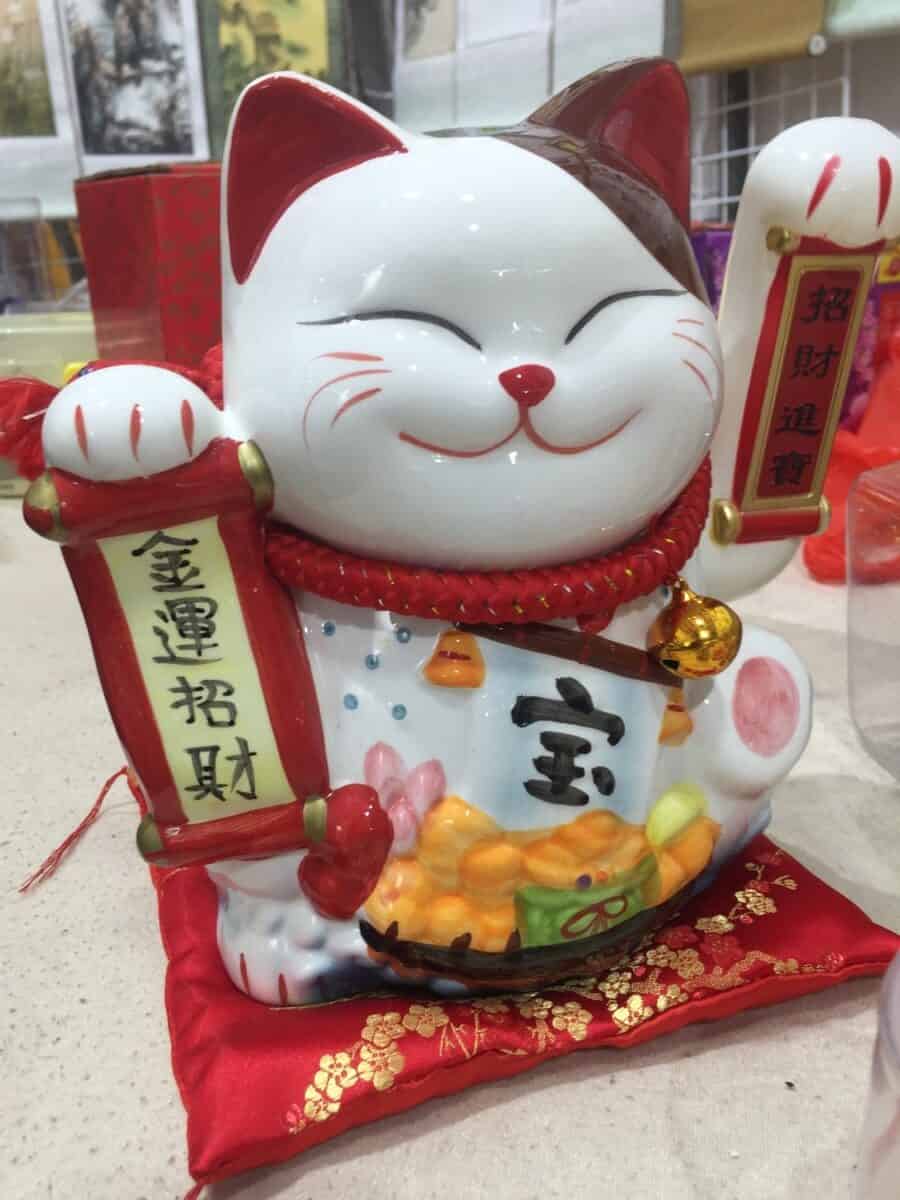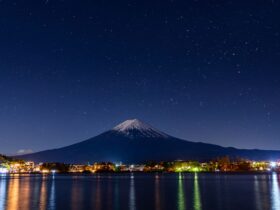The Silver Pavilion, commonly known as Ginkaku-ji, is a Zen temple located near the eastern mountains of Kyoto. The temple is most famous for its wabi-sabi style and stone gardens. In addition to its significance in Japanese history and architecture, Ginkaku-ji is a designated World Heritage Site.
Despite being centuries old and requiring several renovations, most of the temple grounds are open to the public. A circular path wraps through the site, allowing visitors to peacefully enjoy the tranquil gardens and 15th-century architecture.
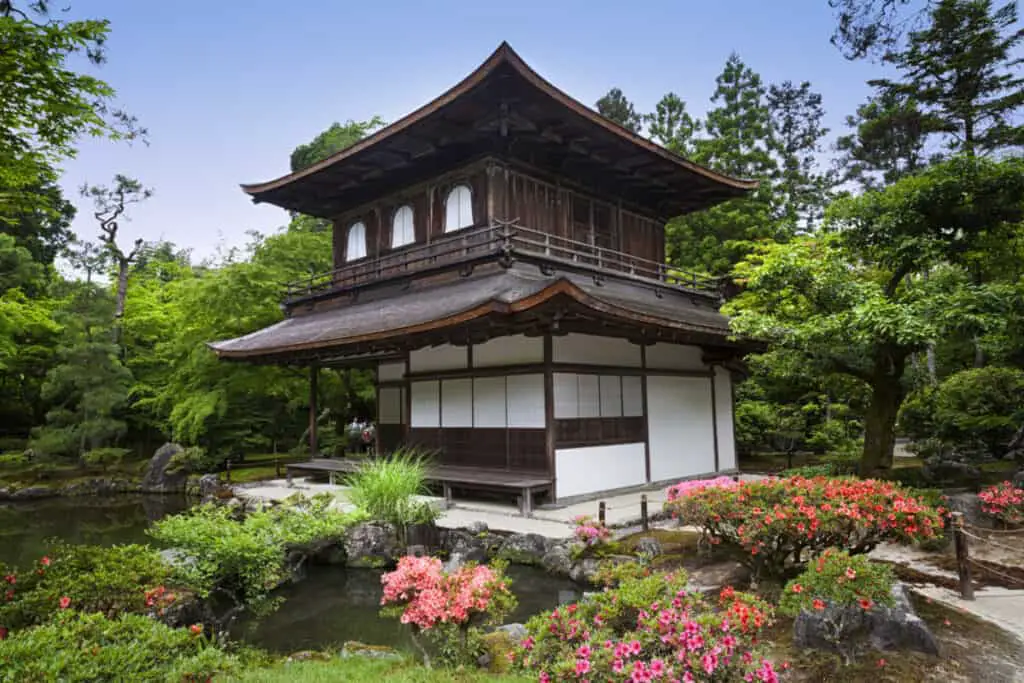
History of the Silver Pavilion (Ginkaku-ji)
Shogun Ashikaga Yoshimasa started plans to construct Ginkaku-Ji as far back as 1460. Originally, Yoshimasa intended the complex to be a retirement villa.
The name Ginkaku-ji, meaning “Temple of the Silver Pavilion,” references Yoshimasa’s plans to coat the temple in silver foil. However, these plans were never realized. Yoshimasa died in 1490, halting further construction of the temple.
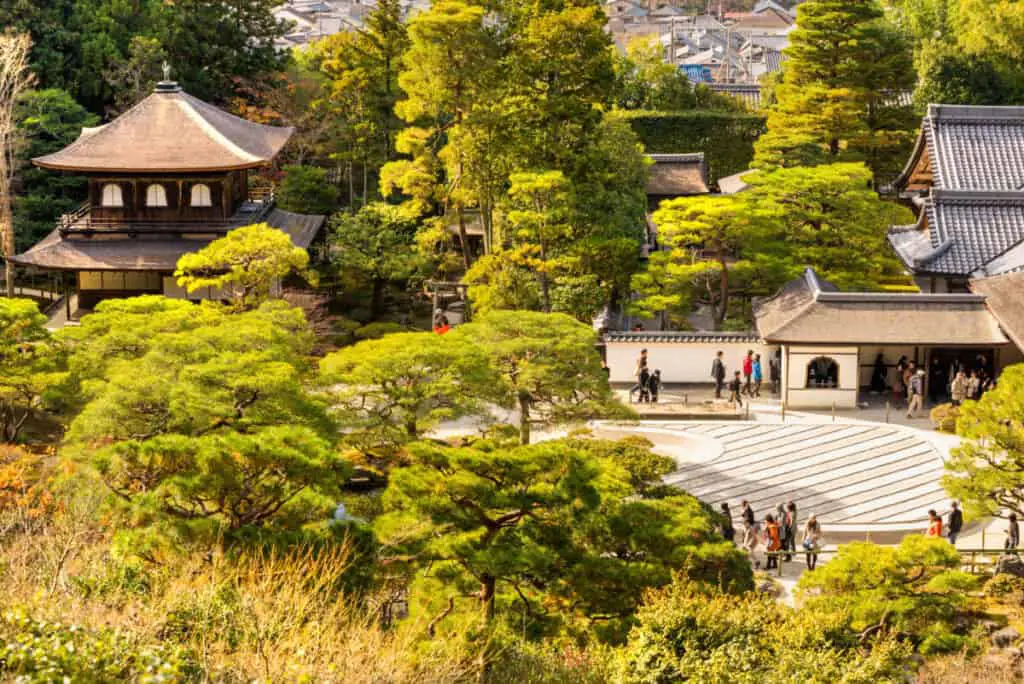
As a result, the temple and surrounding buildings have an “unfinished” quality to them. The way visitors see the site today is how it looked at the time Yoshimasa passed away.
Though Yoshimasa was an ineffective ruler, he was a generous patron of Japanese performing arts. His dying wish was that his villa become a Zen temple. That way, others could experience its architectural beauty and natural tranquility.
Ginkaku-ji Today
Ginkaku-Ji, officially renamed Jishō-Ji following Yoshimasa’s death, has grown into an important place in the history and culture of Japan.
The Silver Pavilion is generally considered the birthplace of Higashiyama culture. The garden designs, temple architecture, and Togu-do ceremonial tearoom are all shining examples of this Japanese aesthetic tradition.

Another architectural innovation Ginkaku-ji brought was the tokonoma. This “alcove” still seen today in Japanese buildings is meant to hold items for artistic appreciation.
Furthermore, Many art historians also consider the temple and grounds to be the cornerstone of wabi-sabi aesthetics. Ginkaku-ji showcases the beauty of “unfinished” and “imperfect” architecture in line with that philosophy.
In the modern-day, the public can visit the serene temple grounds for a modest admission fee. Additionally, there are several ways visitors can reach Ginkaku-ji.
Sea of Silver Sand (Stone Gardens)
Perhaps the most well-known feature of the temple is its dry stone garden, known as the Sea of Silver Sand.
There, you will find sand meticulously raked into mesmerizing lines. The philosophy behind this process is one of renewal in line with wabi-sabi. Just as the sand can be reshaped and brought into harmony, so can visitors through meditation and focus.
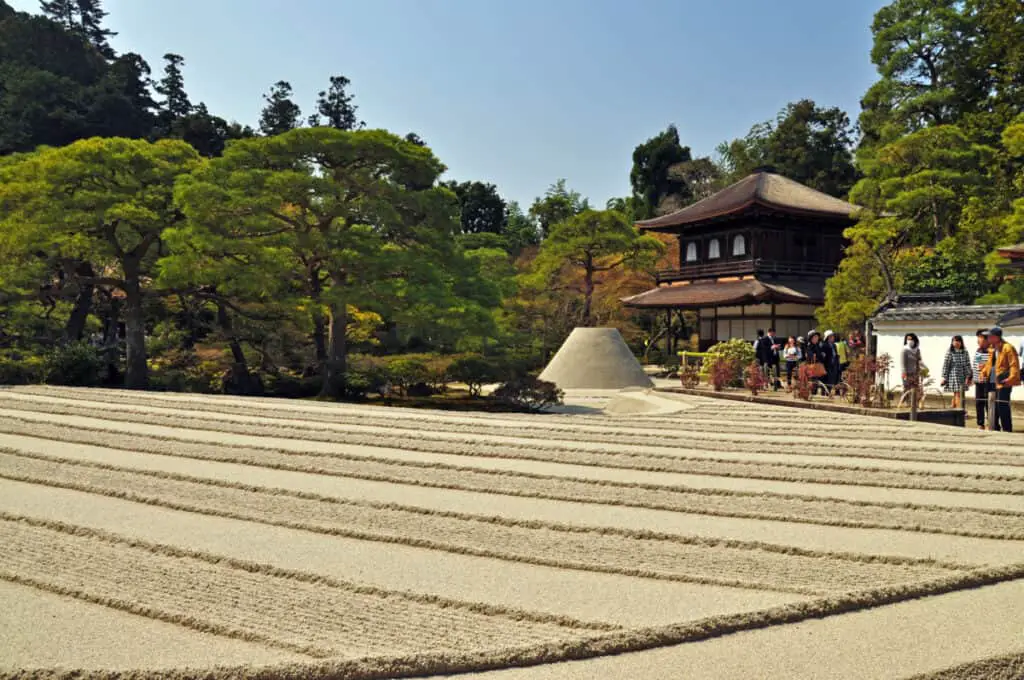
The designs in the silver sand lead to a giant sand cone in the center of the garden. Known as the Moon Viewing Platform, the seemingly perfect mound serves two purposes.
For one, it’s thought to evoke the silhouette of Mount Fuji.
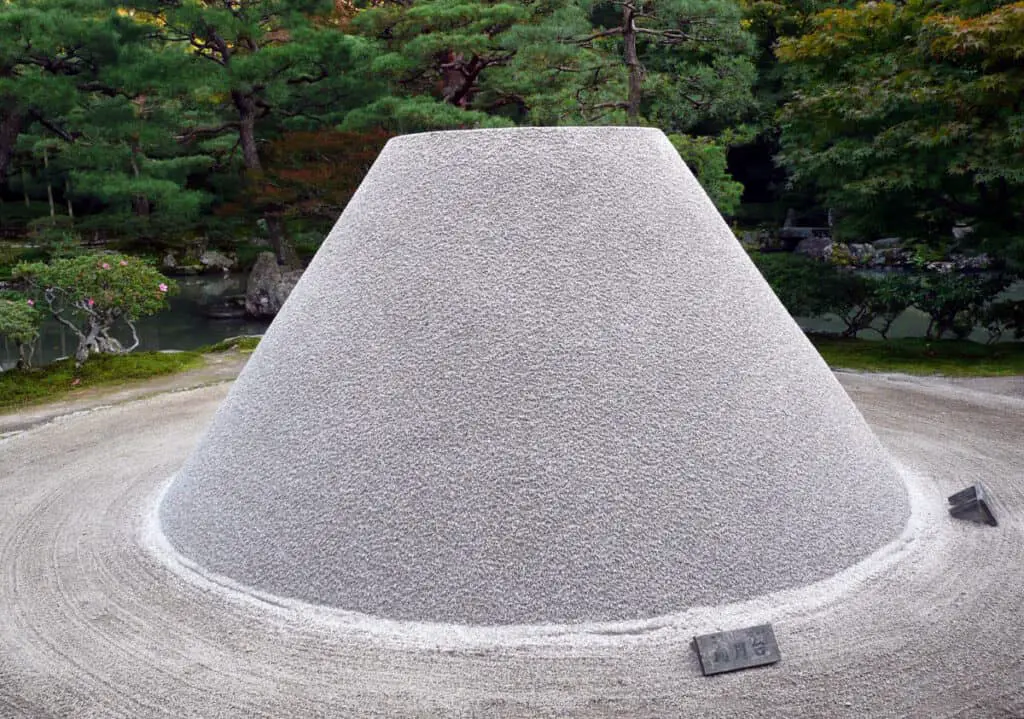
Additionally, as the name suggests, it may have been used for meditative star gazing. At night, moonlight shining on the sand turns it into a silver sea shimmering beneath the platform.
Hondo Hall
Located near the Sea of Silver Sand is Ginkaku-ji’s Hondo.
In Buddhist temples, the Hondo is a place of great significance. It’s where monks would enshrine objects of veneration, as well as pray.
The Hondo is often thought of as the “main building” of the Silver Pavilion’s gardens. In addition to its religious significance, it’s located in the center of the temple grounds.
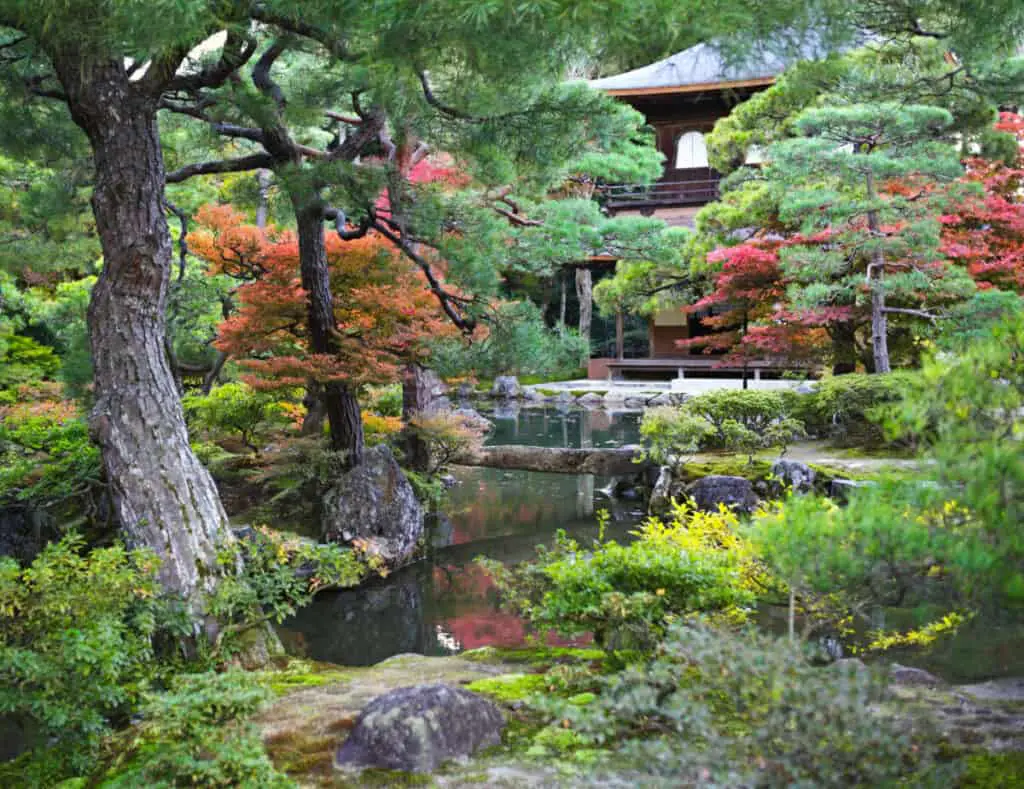
Inside, visitors can find lovely 18th-century screen paintings adorning the walls of the Hondo. These works of art come from celebrated Japanese painters such as Ike no Tiga and Yosa Buson.
From the Hondo, one can also quickly reach the other sections of the temple grounds.
Philosopher’s Walk
The Philosopher’s Walk, known in Japanese as Tetsugaku-no-michi, connects the Silver Pavilion and Nanzen-ji Zen Buddhist temple.
The path is about 1.25 miles long and runs along a peaceful irrigation channel. If you’re visiting Ginkaku-ji, it’s worth walking down this scenic historic path connecting two major Japanese cultural sites.
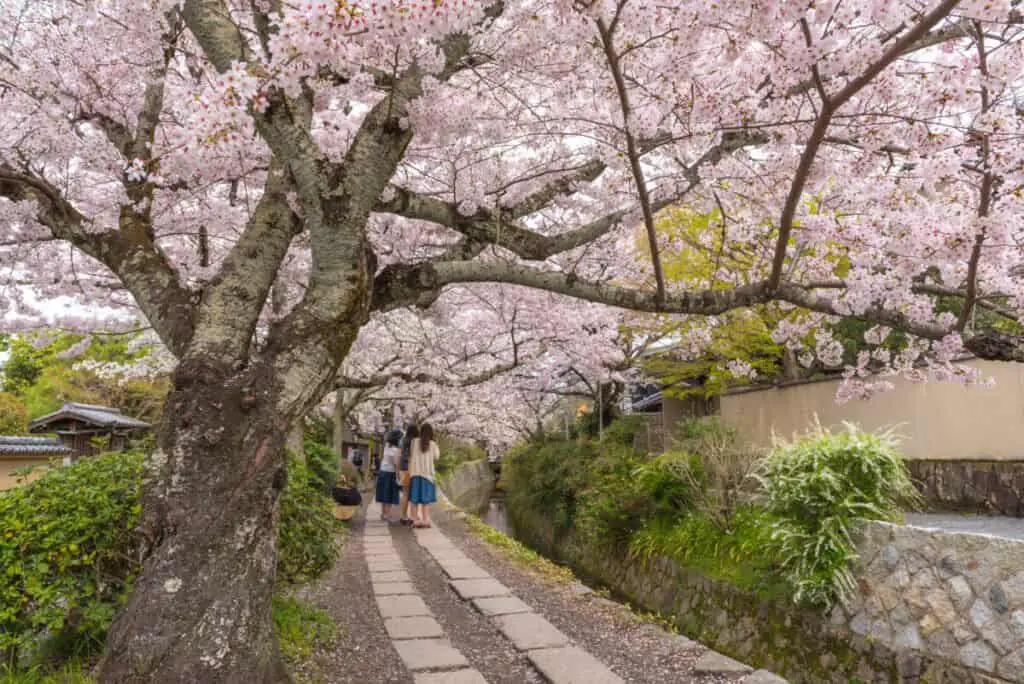
In addition to seeing the Nanzen-ji neighborhood, visitors can find vibrant cherry blossoms in the spring. During that time of year, pink and white petals fall around pedestrians with every breeze in the wind. This ‘petal rain’ often makes for exceptional photo opportunities.
Flower viewing, known as hanami, is a major cultural tradition in Japan. So during that time of year, you can expect to see many locals and tourists enjoying the views as well.
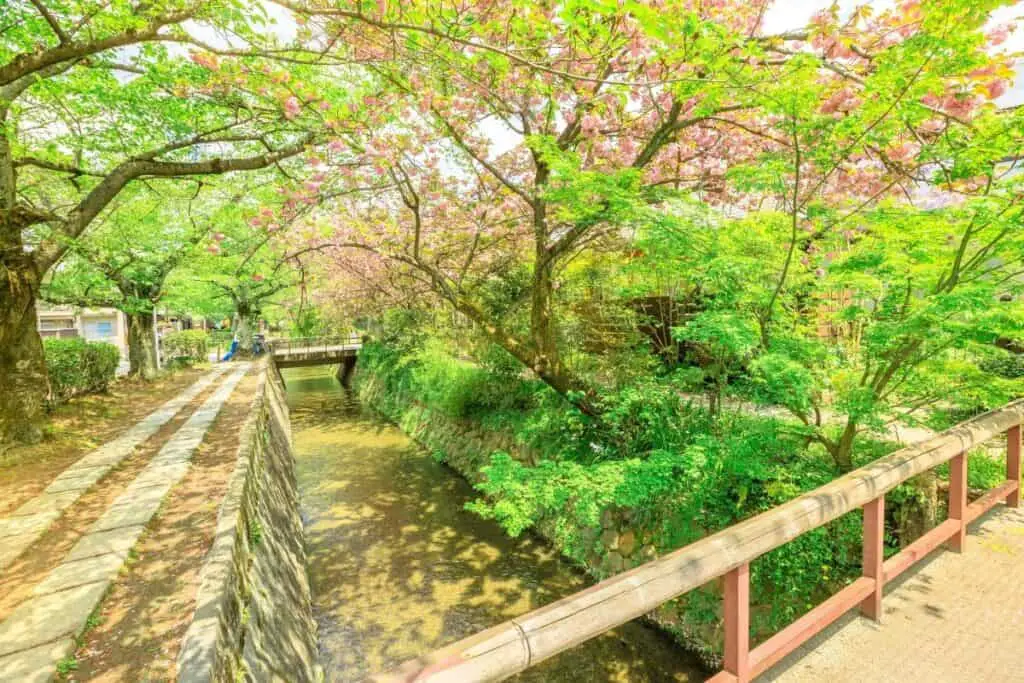
However, the path is also beautiful in the autumn as the leaves change color. Consider planning a fall trip if you still want to take in the natural beauty while dealing with fewer crowds.
Togu-do Hall
Togu-do Hall is one of the only two buildings at Ginkaku-ji that dates back to the initial construction of the grounds (the other being the Silver Pavilion itself).
The building was the residence of Shogun Ashikaga Yoshimasa. And as a result, it has several unique and captivating features.
Along with its elegant thatched roof, the hall sports delicate paper windows, tatami mat flooring, and many unusual side alcoves with hidden shelves.
However, the ceremonial tearoom is the most iconic part of the building.
Tea rooms are a major part of the architectural tradition of Japan. And Togu-do’s ceremonial tearoom, known as Dojinsai, is the oldest in all of the country.
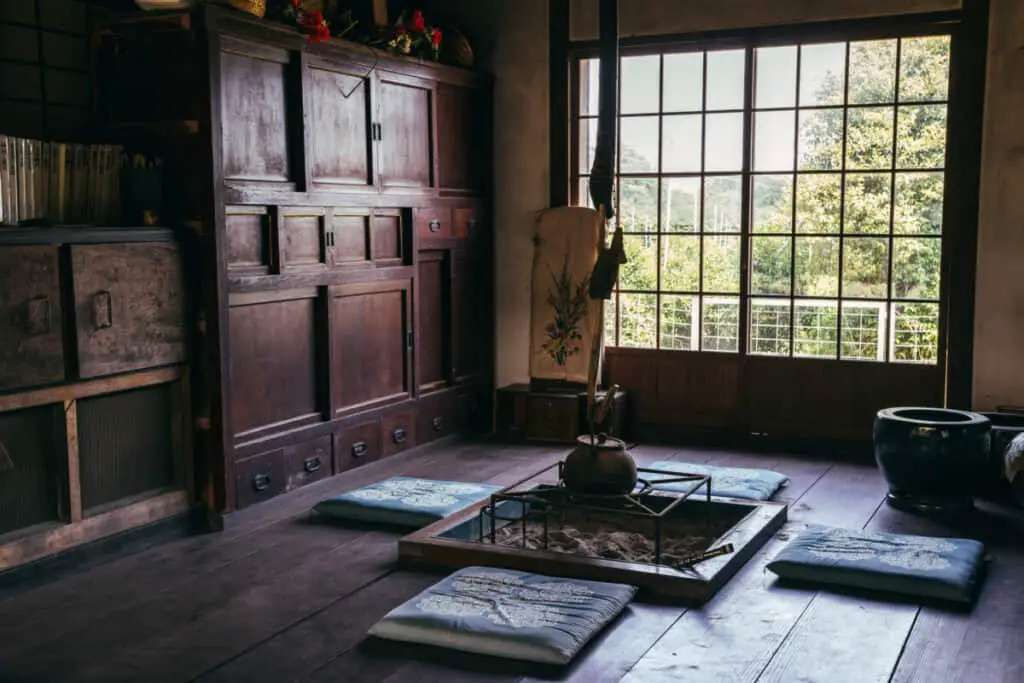
The room itself features tatami mats and a central firebox. This combination would become standard in many future ceremonial tearooms. Additionally, it’s so small that only 4 or 5 people can fit inside.
Unfortunately, this hall is usually closed to the public, barring special occasions. However, visitors can still enjoy its ethereal appearance and numerous stone bridges from the path around the temple grounds.
Silver Pavilion Official Website
How to Get to the Silver Pavilion
There are several ways you can reach Ginkaku-ji.
As we mentioned earlier, you can trek to the Silver Pavilion via the Philosopher’s Walk from Nanzen-ji.
However, a few different buses also stop near the temple grounds.
Philosopher’s Path Location Via Google Maps
From Kyoto station, you can take the Raku Bus 100 or 102 and reach Ginkaku-ji-mae in around 40 minutes. Alternatively, you can also try the Kyoto City Bus 5, 17, or 100 for Ginkaku-ji-michi and be there in about 50 minutes.
If you’re staying at a hotel near the temple, you could also try walking directly to it or the Philosopher’s Walk or even taking a taxi if walking isn’t an option.
Admissions for adults is only 500 ¥, which is about $4.50.
Questions On Getting From Tokyo To Kyoto Check Our Article Here
Virtual Tour Of The Silver Pavilion

